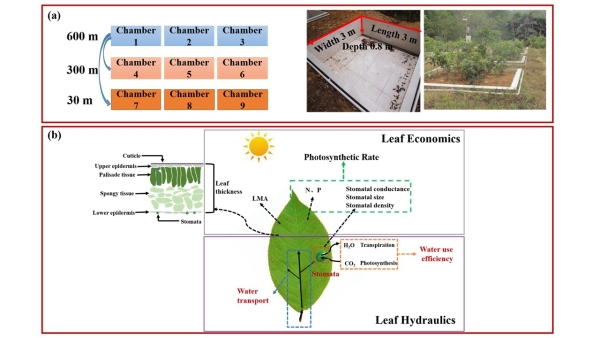

Rising temperature associated with climate change may have substantial impacts on forest tree functions. Researchers from South China Botanical Garden of Chinese Academy of Sciences conducted a 7-year warming experiment in sub-tropical China by translocating important native forest tree species (Machilas breviflora, Syzygium rehderianum, Schima superba and Itea chinensis) from cooler high-elevation-sites (600 m) to 1-2 ℃ warmer low-elevation-sites (300 and 30 m).
With the introduction of Prof. LIU Juxiu, Dr. WU Ting investigates warming effects on leaf hydraulic and economic traits (they report data from the last three years of the experiment). The results show that warming increased the growth of M. breviflora (300 m), S. rehderianum, S. superba and I. chinensis (300 m and 30 m) related to increasing photosynthetic rates, photosynthetic nitrogen use efficiency and photosynthetic phosphorus use efficiency in the wet season; however, they observed decreased growth of M. breviflora at 30 m due to lower stomatal density and decreased photosynthetic rates in the wet season. Importantly, the distribution of M. breviflora in Dinghushan may gradually move up in elevation in response to warming. S. rehderianum and I. chinensis exhibited flexibility to alter stomatal density and/or size in response to warming, allowing them to gain more carbon but lose less water. S. superb may be susceptible to greater soil water deficit in the future, because of larger stomatal size and limited plasticity in stomatal traits. Leaf thickness was decreased in warmer temperatures suggesting that changes in morphology may allow trees to cool leaves during high temperature events.
The result has been published in Global Change Biology, entitled “Long-term effects of 7-year warming experiment in the field on leaf hydraulic and economic traits of subtropical tree species”.
For further reading, please refer to: https://doi.org/10.1111/gcb.15355.

Figure. (a) Chamber design. (b) The scheme of experimental design in the study

